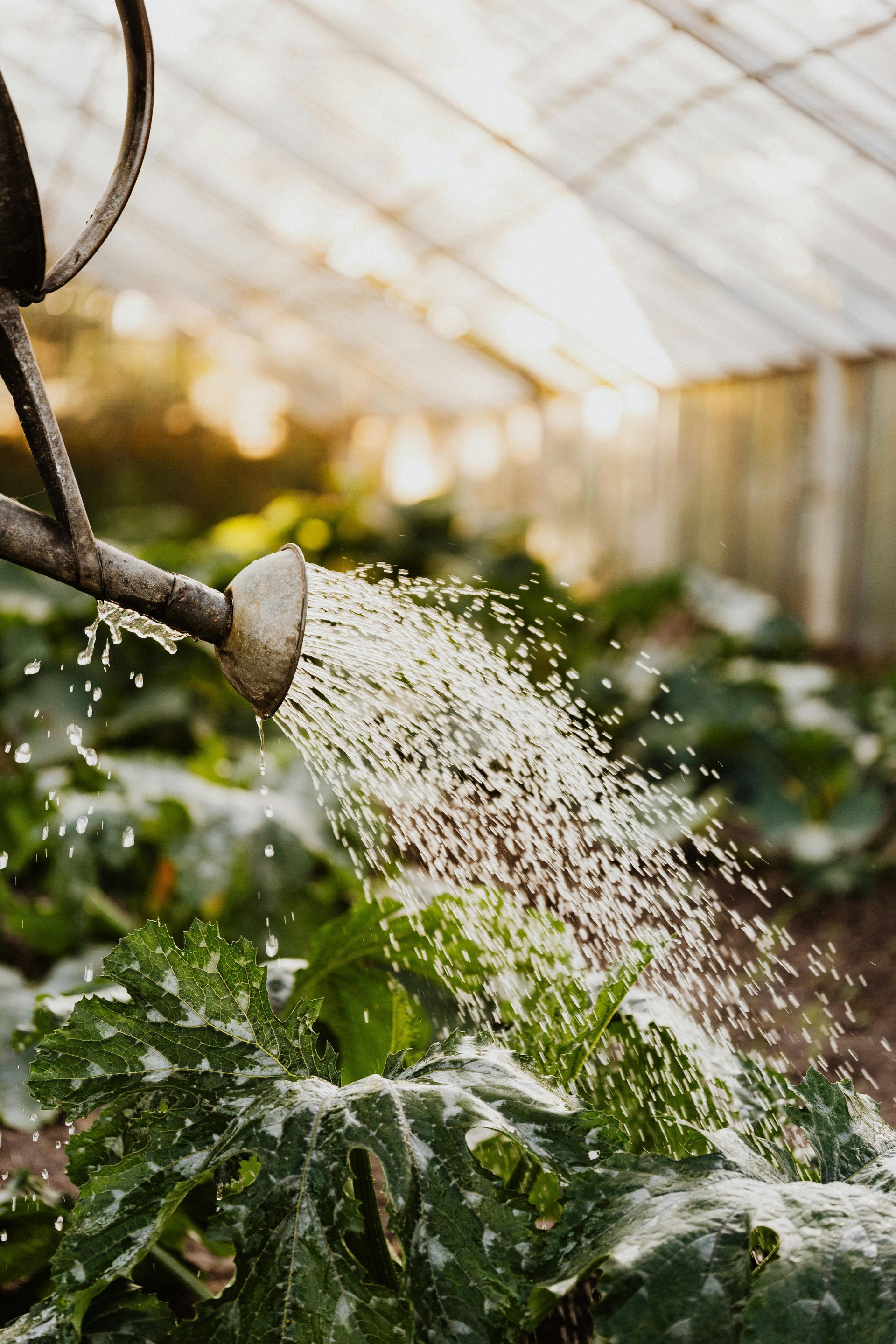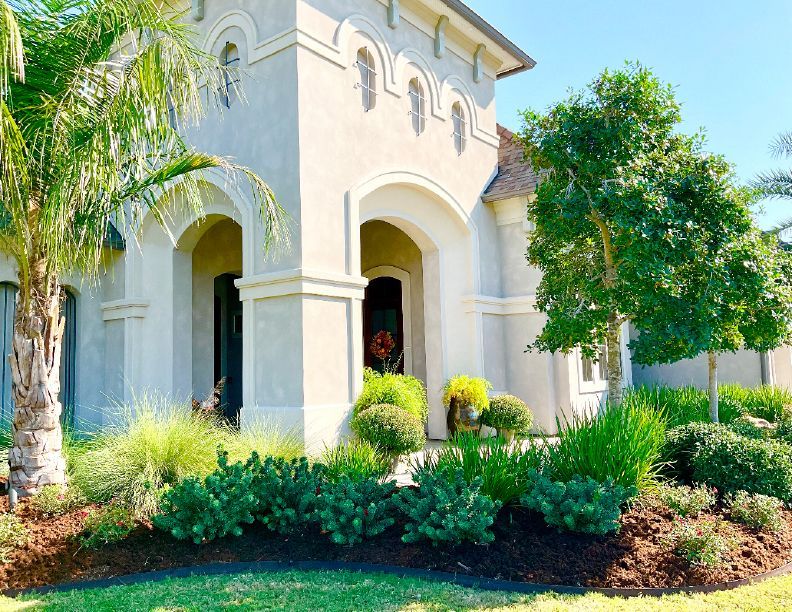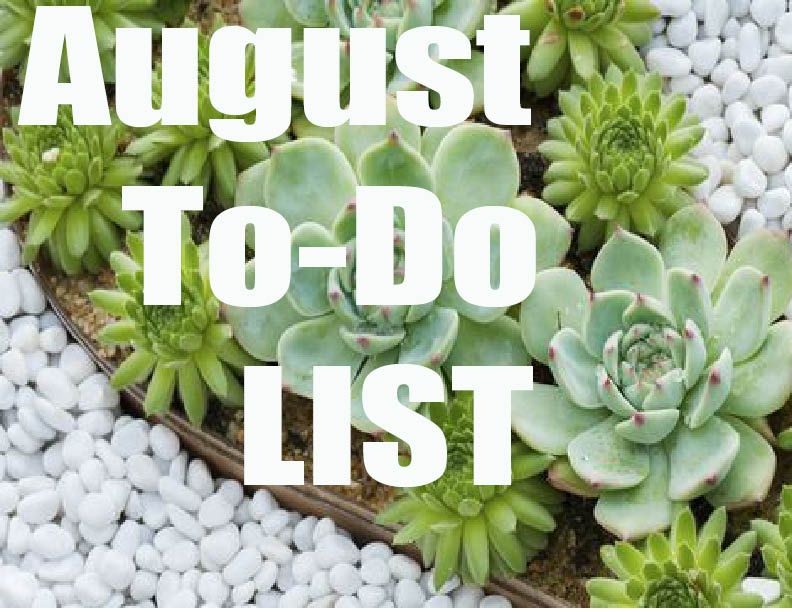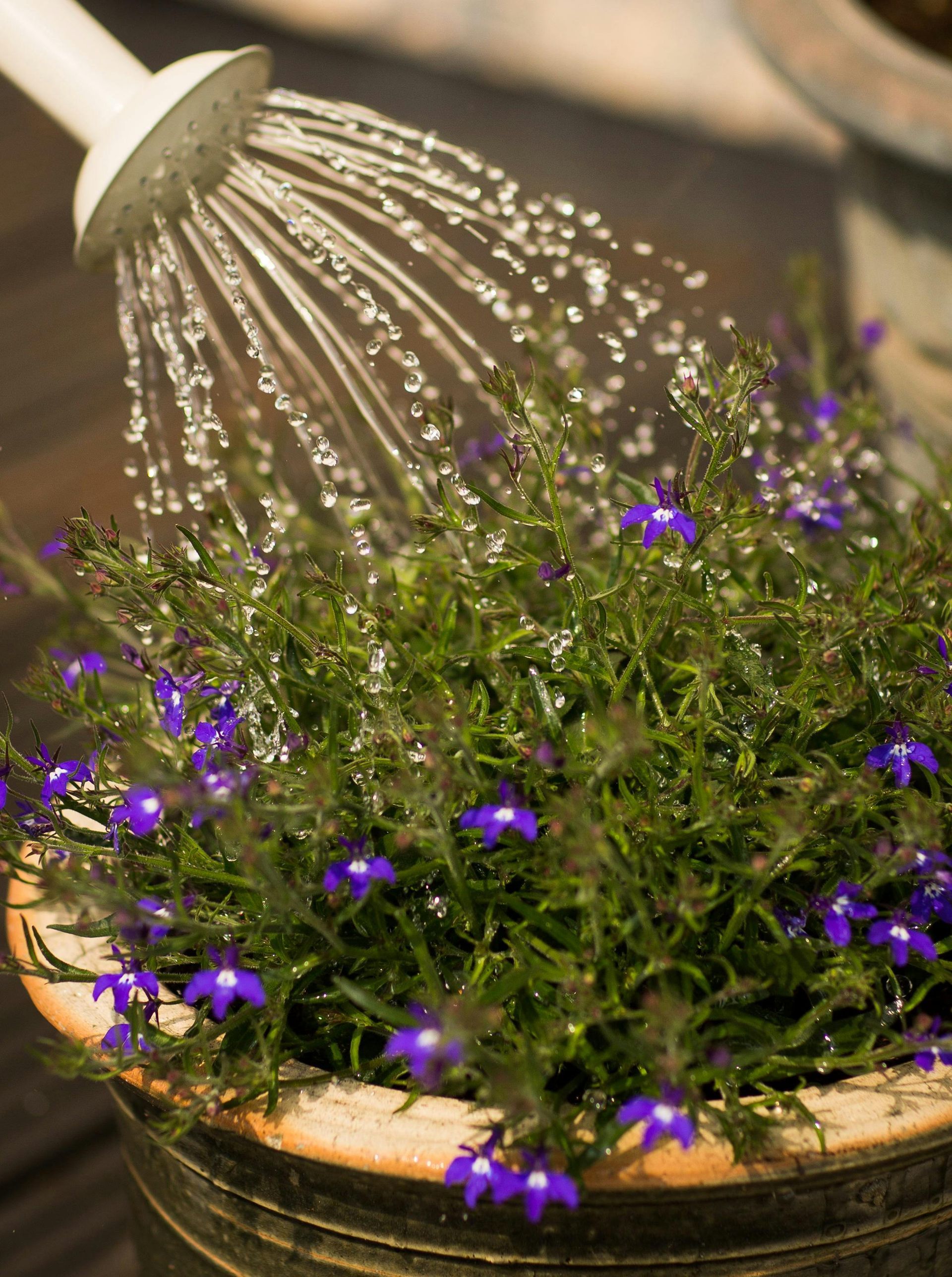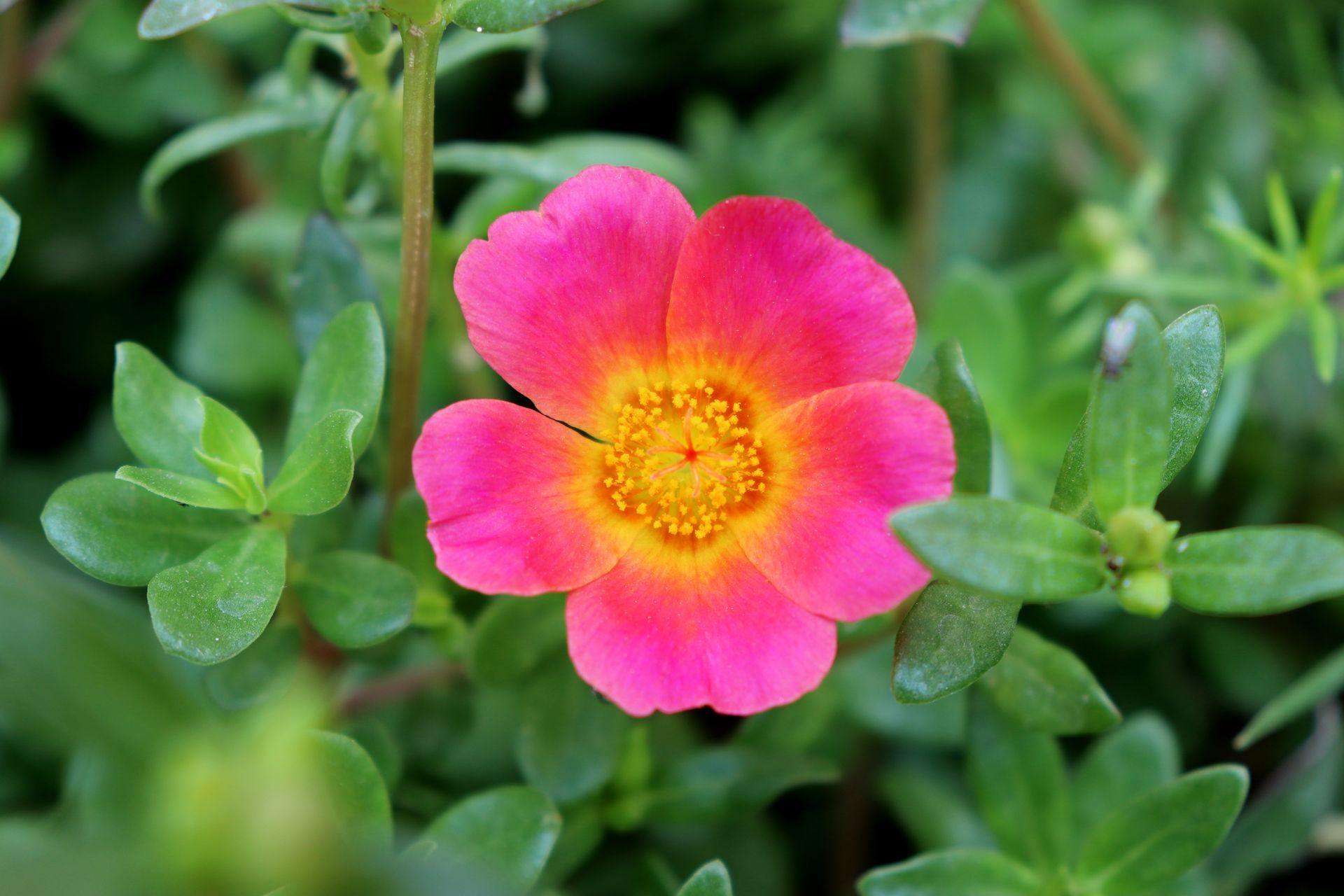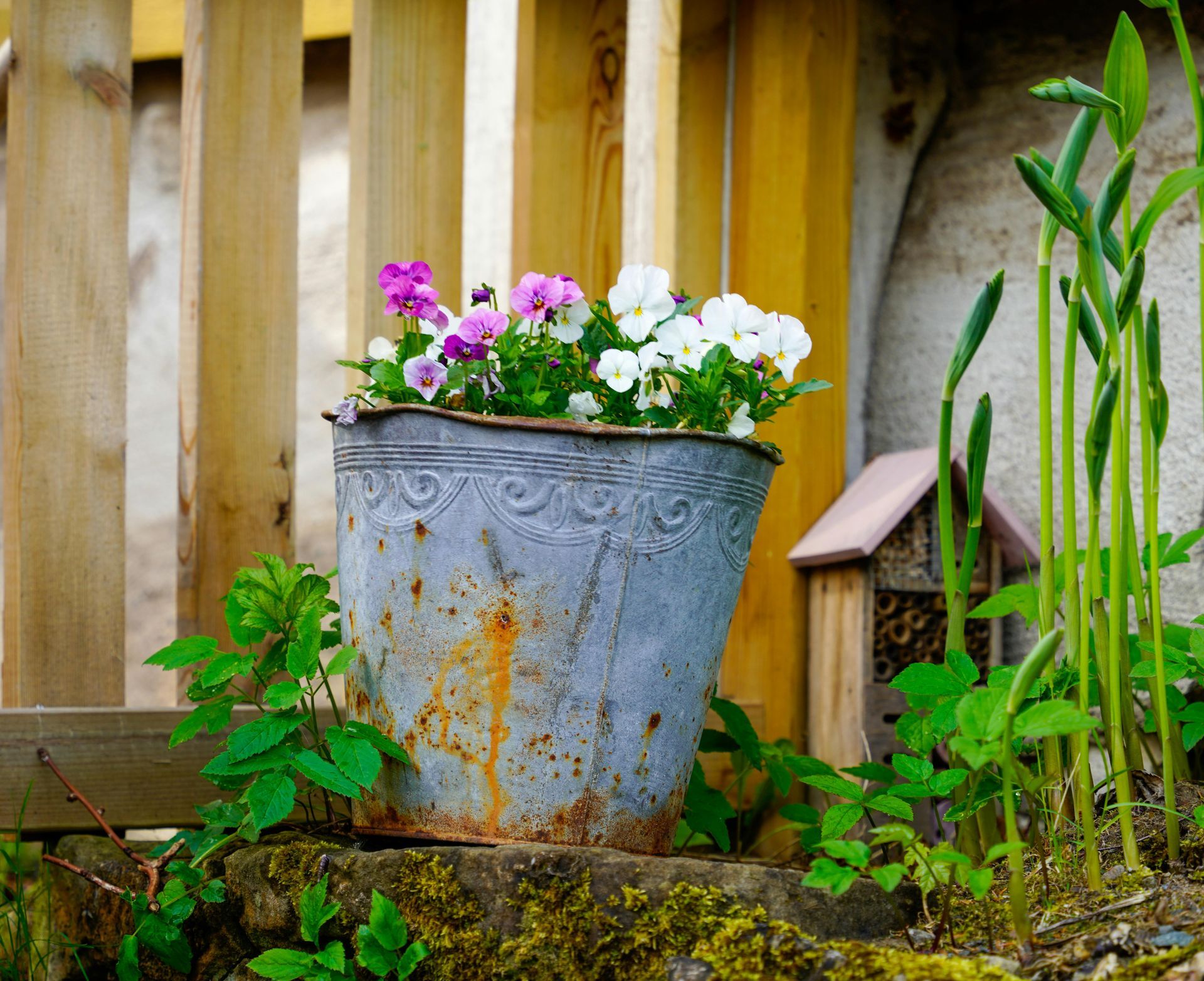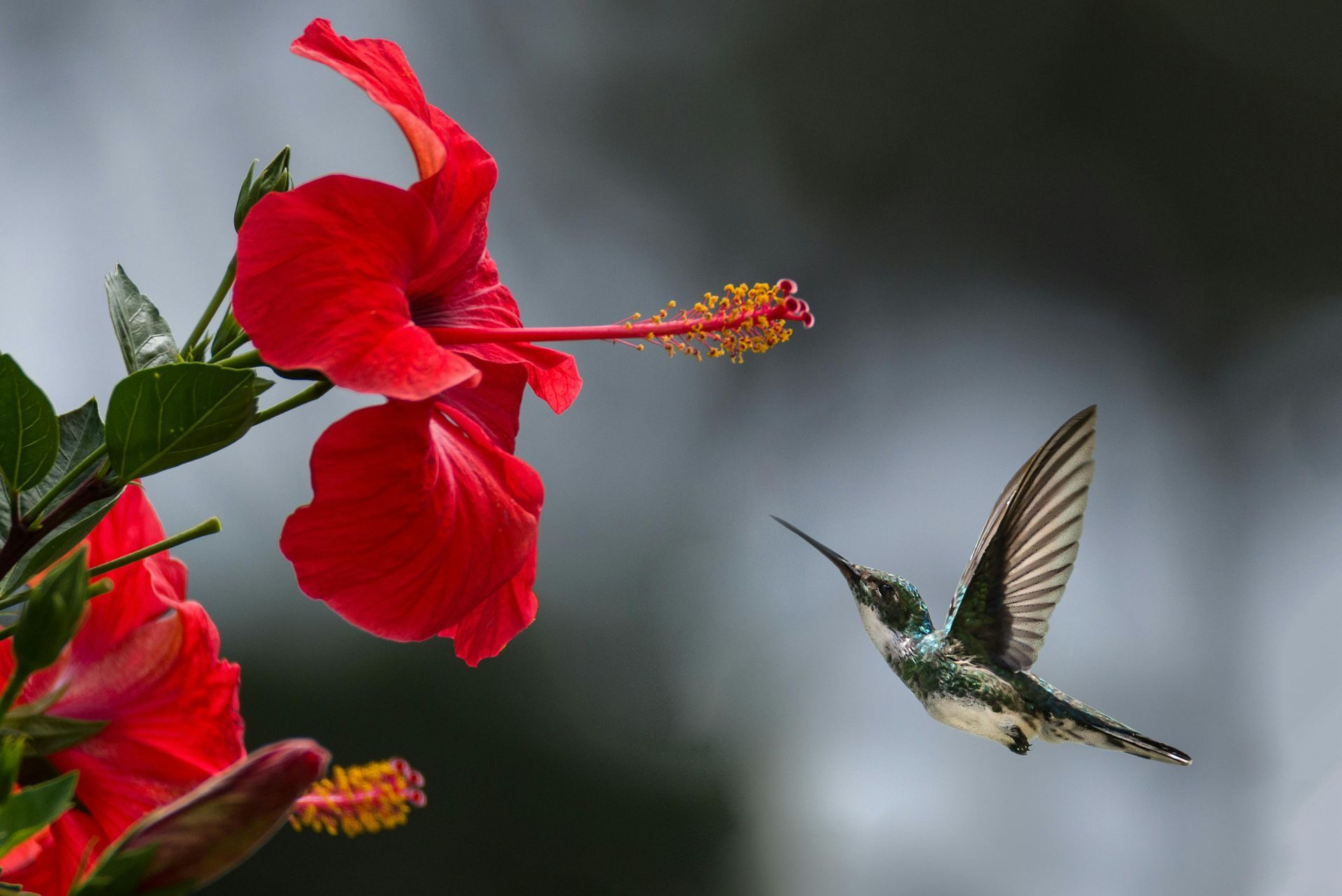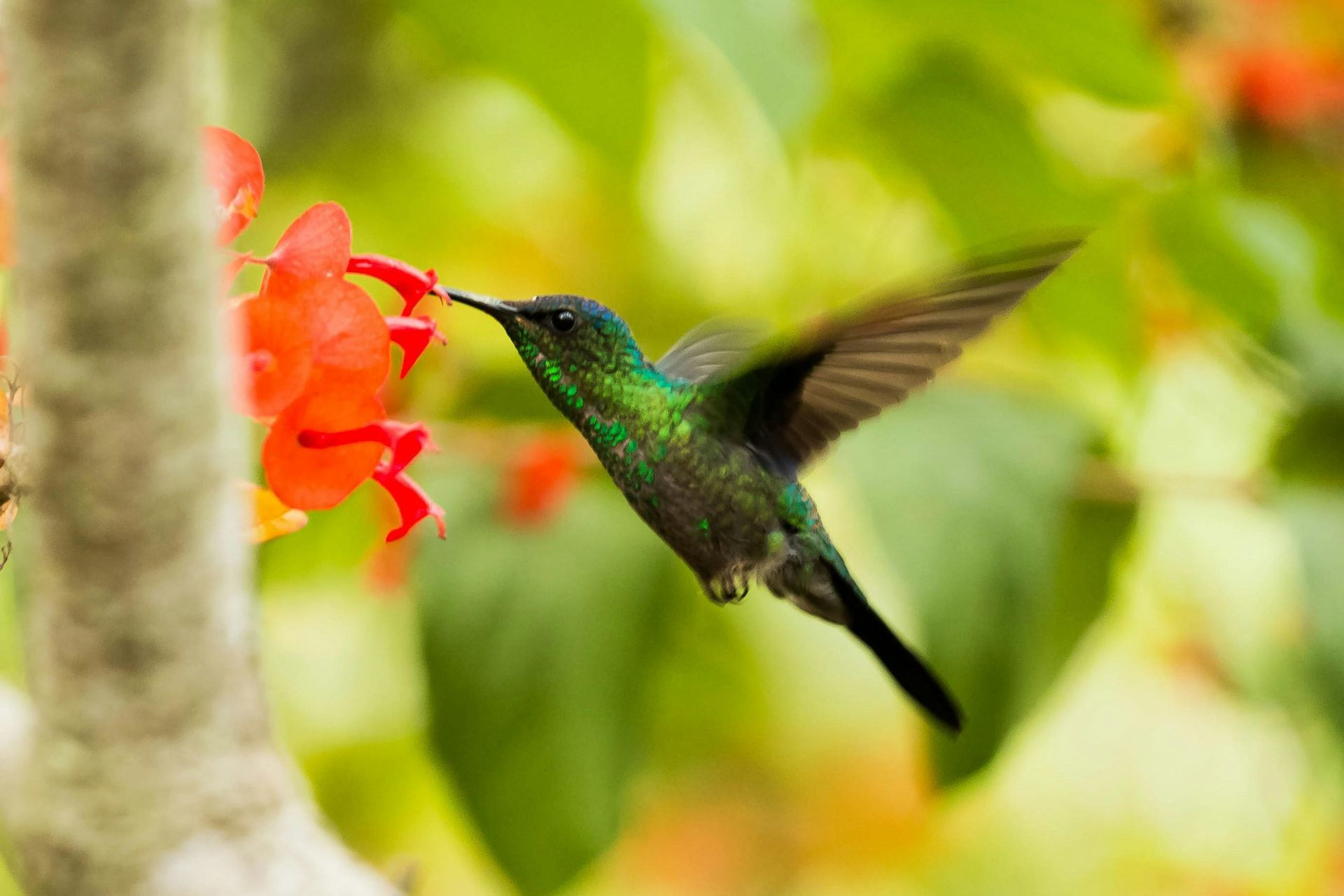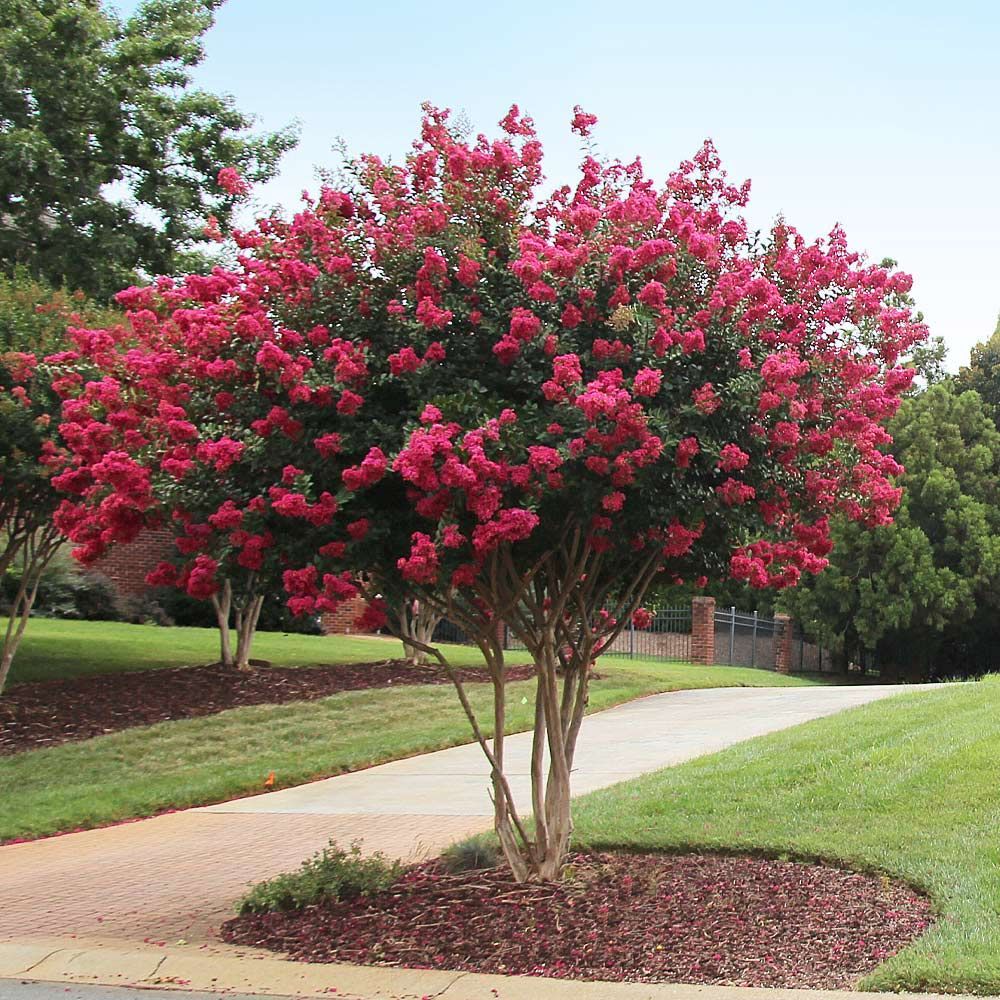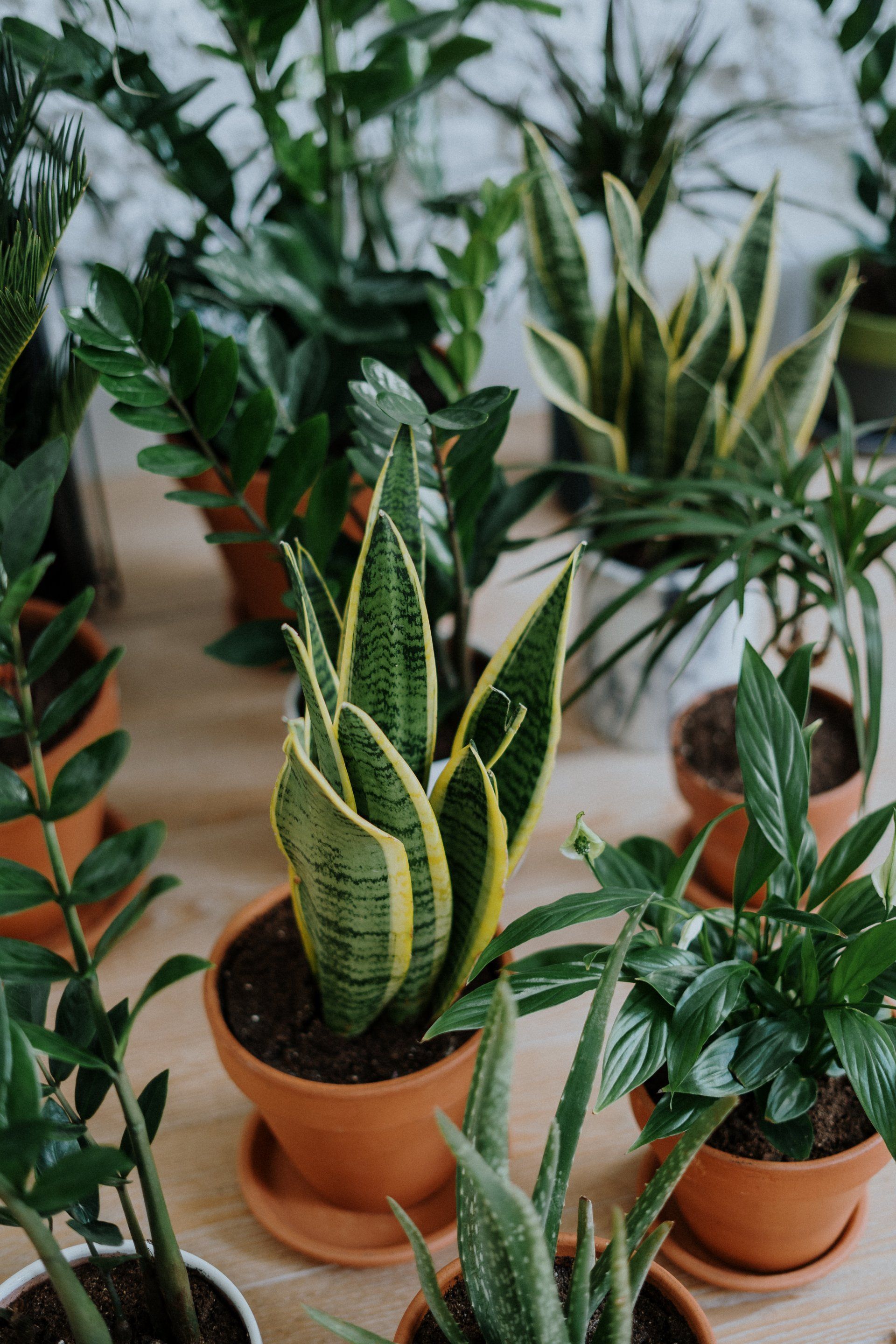Patriotic Plants
The colors red, white, and blue are always on our minds during summer, as the anniversary of our nation’s independence approaches. What better way to celebrate your pride than by planting a red, white, and blue garden? Blue is one of the most elusive colors in nature, but we still have plenty of options for you, in both shady or sunny areas.
Blue Daze (Evolvulus glomeratus)
Blue Daze is a gorgeous tender perennial that typically considered an annual in Louisiana, though they will often persist year to year if the winter is mild. This mat-forming groundcover will become loaded with true-blue flowers that open in the morning and close at night, like its cousin, the much more aggressive Morning Glory. Always well-mannered, there is now a dwarf version called ‘Blue my Mind’ that is even more compact.
Vinca, Madagascar Periwinkle (Catharanthus roseus)
Vinca is the workhorse of the summer garden, thriving on heat and neglect. Technically a tender perennial, vinca is considered an annual, as it dislikes both heavy frost and cool, damp soil. Plant some red and white vinca behind Blue Daze, and your patriotic garden will give nonstop blooms well through summer into late fall.
Pentas (Pentas lanceolata)
Pentas are a great annual or tender perennial for the middle or back of beds. Requiring very little maintenance, Pentas are attractive both to the human eye and to all types of hummingbirds and butterflies. Available in red or white as well as shades of pink and purple, you can’t go wrong with putting a few Pentas in your flowerbeds!
Firecracker Cuphea, Bat-Face Cuphea (Cuphea llavea)
This trailing perennial gets more loaded with red tubular blooms the hotter it gets. A hummingbird magnet, Firecracker Cuphea is related to Cigar Plants and Mexican Heather, and is every bit as tough. They will make a sprawling, groundcover-type perennial in the ground, but this plant also looks great in hanging baskets or in pots.
Endless Summer Hydrangeas (Hydrangea macrophylla)
The best-blooming shrubs for summer color in the shade, Hydrangea offers large flowers in blue, white, and pink, and Endless Summer varieties are particularly happy to rebloom throughout summer into fall. Blue Hydrangeas can be turned pink and vice versa by changing the acidity of the soil, but white hydrangeas are distinct varieties and must be purchased as such. Blushing Bride is the white Hydrangea in the Endless Summer line.
Plumbago, Cape Leadwort (Plumbago auriculata)
Plumbago is one of the most vigorous and free-blooming perennials you can put in your garden, coming back reliably year after year and typically blooming from April to first frost. Plumabgo is one of the true-blue flowers that do very well in our climate, and they also come in white! Plumbago is a large, bushy perennial, so it can serve as a foundation plant in landscape designs, much the same way shrubs are used in the back of beds to unify a color scheme.
Salvia (Salvia spp.)
Salvia are actually a large genus of closely related plants that have common characteristics, including large, tubular, colorful blooms that flower over a very prolonged season. Red perennial salvias include Autumn Sage and Pineapple Sage, where as blue blooms can be obtained by planting Black and Blue or Victoria Blue Salvia. These plants are perennial, meaning they come back year after year, and they are a favorite of hummingbirds whenever they are in bloom!
Wax Leaf Begonia (Begonia semperflorens)
Begonias are old-fashioned favorites for shady areas (although there are types that take sun, as well), and they come in red and white, as well as shades of pink. They are drought-tolerant, bug resistant, and free-blooming without the use of special fertilizers, although they don’t like areas that stay especially wet. Begonias are essential for those trying to brighten dull, shady areas of the yard, especially if soil is poor and nutrients are scarce, such as around the roots of trees in the landscape.
Mandevilla (Mandevilla spp.)
Mandevilla is a tropical flowering vine that can endure light frost, and blooms nonstop from summer into fall. Large, trumpet-shaped blooms in red, white, or pink can easily cover a trellis, fence, or mailbox. Be creative and find different things for Mandevilla to climb on. A living wall can be obtained by planting a Mandevilla on the edge of a patio and attaching string, wire, or netting from the eave, allowing Mandevilla so scramble up and make a solid curtain of blooms. When winter comes and sun on the patio is more appreciated, the Mandevilla will die back naturally and re-sprout the following spring if its root is protected from frost.
Knockout and Drift Roses (Rosa hybrida)
These ever-blooming landscape shrub roses defy the conventional thinking that roses must be high-maintenance. They can thrive on neglect and are much less prone to disease than classic florists’ roses, although they do their best when given on occasional trim and a dose of fertilizer. They come in a wide variety of colors for any taste, but the classic red for both are probably the most hardy and free-flowering. Knockouts become very large and impressive with maturity, and Drifts are miniature roses that fit well in the front of flowerbeds as a groundcover.
Wishbone Flower (Torenia fournieri)
Torenia, also known as the adorable wishbone flower, is a newer tool in the arsenal of the shade gardener that offers especially vibrant colors in shady areas. Blooming in a wide variety of colors, we of course want to focus on the blue and white varieties for shady areas (a purply maroon is also available). The Kauai Torenia is the newest bedding plant for shade to join the family of LSU Super Plants, recognized by LSU Agricultural Research Station to be especially free-flowering and pest-resistant.
Caladiums (Caladium x hortolanum)
Caladiums rely on their bold, beautiful leaves to create a show in shady areas, so blooming – a physiological event sometimes difficult to perpetuate in bedding plants – is not required for them to look their best. They are always shining bright! Coming in a wide variety of red, white, and mottled tones, there are even caladiums that take sun. Some of our favorites are the newer hybrid forms, ‘Florida Moonlight’ and ‘Florida Sweetheart’. Their leaves seem delicate and silky, but, like silk, are very tough and durable.
Please note- All Seasons may or may not have these plants in stock available to purchase at the time you come to purchase these. If you're ever looking for something specific, please call the garden center at 337.264.1418 or send an email question via this link prior to your shopping visit!
